
 One was nicknamed "Lucky".
One was nicknamed "Lucky".Another was anything but!
Canadiens fans older than 35 will remember the vastly talentled, but often indifferent and moody Pierre Larouche.
Few Habs fans will recall the team drafting Cornwall Royal Gary MacGregor in 1974.
Perhaps because I am more familiar than most with MacGregor, from his junior days in my hometown of Cornwall, but I always saw a certain parallel between the two QMJHL offensive dynamos.
 Of the six 50 goal scorers in Habs history, Larouche remains the most anonymous of the group. He is often largely forgotten in looking back on the team's late 70's glory days. To this day, Larouche remains the only 50 goal scoring center the club has ever had - a notion that would surprise many!
Of the six 50 goal scorers in Habs history, Larouche remains the most anonymous of the group. He is often largely forgotten in looking back on the team's late 70's glory days. To this day, Larouche remains the only 50 goal scoring center the club has ever had - a notion that would surprise many!Larouche and MacGregor were part of a bumper crop of QMJHL players whose numbers went through the roof in the 1973-74 season. There have been various reasons for explaining the goal explosion.
The lasting impression in many fans minds of Larouche came via media reports, of an image few fans were privelege to. Made infamous in part by the book "Lions In Winter", Larouche strutted through a Hartford airport cockily, donning a wild fur coat for the era, while chomping on a Cuban cigar, grinning ear to ear seemingly without a care in the world.

The trouble Canadiens coach Claude Ruel had with Larouche's airpost strut, was that the Habs had just gotten pounded, and Pierre didn't seem to even care. In fact, he had just spent a few games in the press box
Nonchalant, isn't even close! Larouche, as time would tell, would never shake the "free spirit" adjective.
THE SOREL BLACKHAWKS ARTILIARY
In junior with the Sorel Blackhawks, Larouche was a dazzling package of talent as a centerman. Gifted with great vision, fluid skating skills, a superior wrist shot, and smooth as silk passing hands, Larouche, at 17, and linemates Michel Deziel and Jacques Cosette, both 19, tore the QMJHL apart like no trio before it or since.

In the 1973-74 season, Larouche and his mates counted for a whopping 283 goals and 409 assists for 692 points between the three of them.
Those are not typos folks!
Larouche led the Blackhawks and the QHJHL in scoring with 94-157-251 totals, a record since topped only by Mario Lemieux (133-149-282) in the 1983-84 season. Larouche's Gretzkiesque assist totals are still a junior hockey bench mark today. Deziel counted for 92-135-227 to finish runner up to Lucky Pierre, and Cosette ranked fourth in the league with 97-117-214 totals.

 There were other stars on a Blackhawks team that potted a wicked 621 goals that winter. Among them were a pair of future Canadiens in Pierre Mondou - drafted 15th overall in 1975, and Lucien Deblois, who became a member of the Habs via a trade in the mid 1980's.
There were other stars on a Blackhawks team that potted a wicked 621 goals that winter. Among them were a pair of future Canadiens in Pierre Mondou - drafted 15th overall in 1975, and Lucien Deblois, who became a member of the Habs via a trade in the mid 1980's.It was often suggested in the day, that the reason for the QMJHL goal outburst in 1974, was the addition of two expansion clubs - the Hull Festivals (who became Hull Olympics one season later), and the Chicoutimi Sagueneens, but hindsight could also suggest it was a simple influx of great offensive talent all at once that made the scores entertaining affairs.
Whatever the reason, hockey scouts of the day weren't impressed with the Q's top talents. In fact, certain scouts were downright suspiscious of the high numbers, and proceeded to draft, or not draft, players from the Q with great caution.
Of the top 10 scorers in the QMJHL, nine belonged to the Blackhawks, Quebec Remparts, and Cornwall Royals, three quality teams that towered above the remnants of the league. This group of players included the Sorel trio, four Remparts named Real Cloutier (93-123-216), Jacques Locas (99-107-206), Rich Nantais (64-130-194) and Guy Chouinard (75-85-160), and Cornwall Royals Gary MacGregor and Kevin Treacy (51-105-156).
 With all this pure offensive talent, however viewed, it is surprising to note that only one of the group of available players, and two from the Q overall, were drafted in the first round by NHL teams.
With all this pure offensive talent, however viewed, it is surprising to note that only one of the group of available players, and two from the Q overall, were drafted in the first round by NHL teams.HABS STACKED WITH 5 FIRST ROUND PICKS, PASS ON LAROUCHE
The Canadiens, with an astounding five first round picks that day, chose to pass over Larouche twice!
Clearly the Habs were weary of the player's defensive liabilities - they'd made Bob Gainey their first round choice one summer prior.
Instead the Canadiens made two solid picks in the fourth and sixth position, although one did not pan out so well.
After making vain attempts to snatch the top picks from either the Washington Capitals or Kansas City scouts, the Habs watched the two players they coveted most - Greg Joly and Wilf Paiement - be drafted by those respective teams. The California Seals then chose Rick Hampton, followed by the New York Islanders dead aiming on Clark Gillies.
The Canadiens were up next, and chose rugged forward Cam Connor, who had notched 47 goals in 65 games with the Flin Flon Bombers. Connor did like many a young Habs prospect of the day, and opted to play in the fledgling WHA rather than become burried in the Canadiens organizational depth for a few seasons.
 After the North Stars selected Doug Hicks, the Canadiens had another shot at Larouche, but passed him up in favor of a center with a more rounded game. Using the first of two picks they had acquired in trading down to draft Gainey the previous summer, the Canadiens selected the crafty and combative Kitchener Rangers center Doug Risebrough, who had scored a sheepish 25 goals by comparison.
After the North Stars selected Doug Hicks, the Canadiens had another shot at Larouche, but passed him up in favor of a center with a more rounded game. Using the first of two picks they had acquired in trading down to draft Gainey the previous summer, the Canadiens selected the crafty and combative Kitchener Rangers center Doug Risebrough, who had scored a sheepish 25 goals by comparison.Larouche remained out there, but not for long. Lucky Pierre, was a Pittsburgh Penguin, chosen seventh overall.
 The Canadiens still had several high picks left, thanks in no small part to Sam Pollock's notorious wheeling and dealing. It was assumed at some point that they would use one somewhere to choose a high scoring Quebec born star. It was not to be.
The Canadiens still had several high picks left, thanks in no small part to Sam Pollock's notorious wheeling and dealing. It was assumed at some point that they would use one somewhere to choose a high scoring Quebec born star. It was not to be.After the Red Wings chose center Bill Lochead of the Oshawa General, the Habs were up at bat again with the second pick gained from the Gainey tradedown, chosing a protypical rugger fourth liner in Rick Chartraw, again of the Kitchener Rangers.
Once the Buffalo Sabres made good on choosing defenseman Lee Fogolin from Oshawa, the Habs made their fourth choice of the first 12 positions that day. In a pick awarded from trading Randy Rota and Bob Murdoch to the L.A. Kings the previous season, the Canadiens selected an 18 year old kid who had been playing in their backyard for the Montreal Bleu, Blanc, Rouge - winger Mario Tremblay.
The Canadiens were able to select Tremblay under the same provision that allowed the Penguins to grab Larouche. In order to compete with the WHA, who were selecting and signing 18 years old straight out of junior leagues, NHL teams were permitted to draft one 18 or 19 year old junior per draft. Tremblay, who had racked up 49-51-100 totals in 47 games, became only the second QMJHL player taken in the first round.
 Montreal had one more first rounder left - their own pick for a change - and chose Gord McTavish, a 6' 4" center from the Sudbury Wolves. McTavish would play with Nova Scotia for four seasons, even earning a playoff MVP trophy in 1977, but he never truly fit in the Canadiens plans.
Montreal had one more first rounder left - their own pick for a change - and chose Gord McTavish, a 6' 4" center from the Sudbury Wolves. McTavish would play with Nova Scotia for four seasons, even earning a playoff MVP trophy in 1977, but he never truly fit in the Canadiens plans.Nantais was the next player from the Q to go, chosen 24th overall by Minnesota. He would appear in 64 games with the North Stars over four seasons, before vanishing from the hockey scene.
 Cosette went next in the group, chosen 27th by the same Penguins who chose Larouche. In over 4 season in the Pittsburgh organization, Cosette would appear in 64 games, scoring 8 goals. Both players were hockey afterthoughts by 1980. Deziel was selected 47th overall by the Buffalo Sabres and appeared in but a lone NHL playoff game in his career.
Cosette went next in the group, chosen 27th by the same Penguins who chose Larouche. In over 4 season in the Pittsburgh organization, Cosette would appear in 64 games, scoring 8 goals. Both players were hockey afterthoughts by 1980. Deziel was selected 47th overall by the Buffalo Sabres and appeared in but a lone NHL playoff game in his career. THE SAGA OF REAL "'BUDDY" CLOUTIER
After Larouche, perhaps the most talented player available had been the Remparts Real Cloutier. As an 18 year old, and having scored 93 goals in finishing third in the scoring race, Cloutier was available for all takers.
Through 25 rounds of the Entry Draft, Cloutier went unclaimed!
There were reasons for teams ignoring him, such as a party animal reputation, an unhealthy lifestyle, a sheer refusal to backcheck, and run ins with coaches. In short, Cloutier seemed a talent ready to implode, who had "steer clear" signs written all over him.
Cloutier would not be drafted until 1976, when at age 20, the Chicago Blackhawks rolled the dice on him. It didn't matter much to Cloutier at the time, as he had signed straight out of junior with the WHA Quebec Nordiques, bad reputation or not!

Nicknamed "Buddy", Cloutier stormed the WHA for five seasons, scoring successive years of 26, 60, 66, 56, and 75 goals. So much for a bad rep!
When the Nordiques joined the NHL in 1979-80, they desperately wanted to hold onto Cloutier, and sent their third round pick in the 1980 draft to Chicago, who held his NHL rights. Each WHA squad entering the NHL were allowed to protect but one player, and the forthcoming rivalry between the Canadiens and Nordiques played a part in why Quebec chose to deal with Chicago for Cloutier's contract.
NORDIQUES DENY A TARDIFF RETURN TO MONTREAL
It had already been assured that Nordiques would lose young prospect Danny Geoffrion, son of the famed "Boom Boom" back to the Habs. Geoffrion was a rookie in the WHA that season, but was coming off a 68 goal campaign with the Cornwall Royals. As the Boomer was set to make his coaching debut in Montreal, the Nordiques complied and let him go. As each NHL team could only claim one WHA player per roster, the Nordiques protected star Marc Tardiff - a former Habs player still owning his NHL rights - thus forcing the Canadiens to select Geoffrion.
In not letting the Canadiens retain Tardiff - which would have been disastrous P.R., or trading their first round pick to Montreal to retain Tardiff and thus protect Cloutier, the Nordiques forced themselves into the deal with Chicago.
 Another provision of the WHA merger, was that NHL clubs would retain their top draft pick order. The Canadiens already had dibs on the Colorado Rockies top pick, and the Nordiques would be darned to give them another.
Another provision of the WHA merger, was that NHL clubs would retain their top draft pick order. The Canadiens already had dibs on the Colorado Rockies top pick, and the Nordiques would be darned to give them another.The Canadiens selected Doug Wickenheiser, and the Blackhawks, using the Nordiques spot for passing on Cloutier were thrilled to grab future Hall Of famer, Denis Savard.
Cloutier would last four seasons with the NHL Nordiques before old ghosts would hamper his play. He was traded to Buffalo in 1983, where an uncompromising Scotty Bowman quickly grounded his career. Buddy Cloutier would retire from hockey following the 1985 season.
CANADIENS CUPS CAMOUFLAGE DRAFT BLUNDERS
The Canadiens in all this, looked to fare pretty well at the time. It had something to do with the winning of four consecutive Stanley Cups that quieted critics of their apparent snubbing of offensive Quebec junior league talent from 1974. While the Boomer's son would be a bust in Montreal, it would soon be brought to the clubs attention by media, that the Habs brainstrust had passed over all of Larouche, Mike Bossy, and Denis Savard in the space of six seasons.
Bossy, perhaps the purest goal scorer the NHL has ever known, was available for the Canadiens to choose in the 1977 draft, but they found him to be defensively weak and skittish when the going got tough. They opted for Mark Napier, who would become a 40 goal scorer for the Habs in matter of seasons.
 Imagine the Canadiens late 1970's dynasty, continuing on with the likes of Larouche, Bossy and Savard nestled up to the talents of Lafleur, Shutt and company.
Imagine the Canadiens late 1970's dynasty, continuing on with the likes of Larouche, Bossy and Savard nestled up to the talents of Lafleur, Shutt and company.The dream you are imagining, was all there for the taking!
WHAT BECAME OF THE HABS CLASS OF '74
In passing up many of the offensive guns in the 1974 draft, the argument maintains itself that the Canadiens hardly struck out. Three of their five first round picks that season would graft thenselves to the big club in less than a year. Risebrough, Tremblay, and Chartraw all had short stints with the Nova Scotia Voyageurs in 1974-75 before being called up to the Canadiens for good early that season.

Tremblay and Risebrough, taking advantage of a career ending injury to Henri Richard were called up together and immediately made and impression. Risebrough took up the fourth line center role, and added 15 goals and 47 points in 64 games. The 18 year old Tremblay, still a tempermental greenhorn, notched an impressive 21 goals on Risebrough's wing. Combining with Yvon Lambert, the trio quickly carved out an identity as a line that no one wanted to play against. Chartraw, for his part, added muscle to the club when called up. He would prove especially valuable in games against the rugged Bruins and maniacal Flyers.
 Three other players taken in the 1974 draft would be useful to the Canadiens in different manner. Towering defenseman Gilles Lupien, taken 33rd overall, played three season for the Canadiens.
Three other players taken in the 1974 draft would be useful to the Canadiens in different manner. Towering defenseman Gilles Lupien, taken 33rd overall, played three season for the Canadiens.Marty Howe, son of Gordie, was selected 51st overall, and was dealt three seasons later to Detroit for future considerations. Dave Lumley, selected 199th overall, was traded to the Edmonton Oilers in 1979, for a draft choice that became Ric Nattress.
 In the spring of 1983, Lupien was dealt to the Winnipeg Jets, in order to free Serge Savard from his contract. Savard signed on as Canadiens GM, and one of his first orders of business was trading Chartraw to the Kings for a pick in that summer's draft. The Canadiens would use the pick to select Claude Lemieux.
In the spring of 1983, Lupien was dealt to the Winnipeg Jets, in order to free Serge Savard from his contract. Savard signed on as Canadiens GM, and one of his first orders of business was trading Chartraw to the Kings for a pick in that summer's draft. The Canadiens would use the pick to select Claude Lemieux.Risebrough and other Canadiens assets were packaged in a deal of complicated flip flop draft swaps that allowed the Habs to select several hopefuls, including a player named Graeme Bonar. A 6' 3", 205 lb center, Bonar looked to be a bona fide NHL'er to be.
 With 66 goals in his final year of junior in Peterborough, Bonar came to the Habs camp and promptly broke his wrist so badly, his career was for all intents over before it began.
With 66 goals in his final year of junior in Peterborough, Bonar came to the Habs camp and promptly broke his wrist so badly, his career was for all intents over before it began.As for Tremblay, his playing days extended until the end of the 1986 season, when shoulder problems ended his career.
THE ONE THAT GOT AWAY
In all the draft picks the Canadiens managed in 1974, they did get their hands on the Quebec league's top offensive sniper for that season.
The pick was a smart one, and I remember Gary MacGregor quite well. The Canadiens selected MacGregor 30th overall that season, and crossed their fingers!
MacGregor was a freckle faced third year veteran with the Cornwall Royals that season. At 19 years old, he'd gone undrafted the previous summer, but he suffered from the same comparisons as all QMJHL'ers at that time - all offense and little substance.
 In MacGregor's case, nothing could have been further away from the truth, and I always suspected the Canadiens knew he had game.
In MacGregor's case, nothing could have been further away from the truth, and I always suspected the Canadiens knew he had game.The Cornwall Royals, never quite fit the Quebec league mold. Based a half hour west of the Quebec border in Ontario, the Royals, due to CHL rules, played in the Q using Ontario born players for the most part. The Royals won Memorial Cups as a member of the Q in 1972, 1980, and 1981. They remain to this day, 20 years after extinction, the most successful Quebec junior team on the national stage. What made Cornwall successful, was that they taught defense to players who were already familiar with such concepts. MacGregor was no exception.
As a rookie with the Royals in 1972, MacGregor immediatly inherited the role of assistant captain. He was runner up for rookie of the year honours that first season, as he scored 39 goals and 28 assists in 60 games. Later that year, he scored the Memorial Cup winning goal, in a 2-1 game over a heavily favoured Peterborough Petes team that included Bob Gainey.
The following season, MacGregor missed 15 games due to injuries, but still tallied 43-24-67 totals in 45 games.
MacGregor was not a big player. Standing at 5'9 and weighing 175 pounds, he had drawn comparisions to Marcel Dionne. A clean player who never looked for trouble in the roughouse league, MacGregor knew how to handle himself quite well in the fisticuffs department. In three seasons, he likely had less than a dozen fights. MacGregor never lost a single one, and once word spread that he had knocked two opponants out cold, he was left alone for the most part.
MACGREGOR, A ONE MAN WRECKING CREW
In the 1973-74 campaign, MacGregor was a one man wrecking machine. He led all Quebec junior players with an even 100 goals - a feat only reached by Guy Lafleur up to that point. Gary added 74 assists to finish seventh in league scoring.
What was most impressive was that MacGregor did most of this damage with few cohorts of his calibre. The Royals were hardly the loaded squad that Sorel or the Remparts were. There were but three future NHL'ers in their ranks, most notably defenseman Bob Murray and faceoff specialist Rick Patterson, both future Chicago Blackshawks.
The remainder of the group were anonymous 20 goal men, with the exeception being Boom Boom Georffrion's two sons - 18 year old Bobby and 15 year old Danny.
 MacGregor's main accomplice, was a player even smaller in stature, center Kevin Treacy, who profited from a season of give and go with Gary that resulted in 51-105-156 numbers. Treacy went undrafted after his junior career.
MacGregor's main accomplice, was a player even smaller in stature, center Kevin Treacy, who profited from a season of give and go with Gary that resulted in 51-105-156 numbers. Treacy went undrafted after his junior career.The QMJHL recognized MacGregor's full merit with three awards and nominations. He was voted the league's MVP, ahead of some lofty competition, and named to the first All Star team as well. With 76 penalty minutes to his credit, he was awarded the Franke Selke Trophy as the league's most gentlemanly player.
At season's end, MacGregor was rated by The Hockey News as the 12th best NHL prospect.
 Why MacGregor was still available for the Canadiens to draft in the 30th spot that summer had much to do with him making his professional preferences well known. The WHA teams were being quite aggresive in throwing foolish money around, and MacGregor, like many other kids had done at the time, followed the trail.
Why MacGregor was still available for the Canadiens to draft in the 30th spot that summer had much to do with him making his professional preferences well known. The WHA teams were being quite aggresive in throwing foolish money around, and MacGregor, like many other kids had done at the time, followed the trail.JUMPS TO WHA
The Chicago Cougars, coached by Jacques Demers, selected MacGregor in tenth spot that summer, just days before the Canadiens were to snap up his NHL rights. Once MacGregor learned of being drafted by the strong Canadiens club, he figured he would be spending a few seasons in the minors. The thought appealed to him a great deal less than the Cougars alluring dollars. MacGregor inked a deal before the Canadiens could even speak to him.
MacGregor earned his money that first season, leading the Cougars in scoring 42 goals and adding 34 assists in 78 games. He was named the WHA rookie of the year, and was chosen to participate in the second Summit series against the USSR. Due to an injury, he did not suit up in any international contests.
The WHA being what it was financially, moved the club twice in the span of a year. No sooner was MacGregor a Denver Spur, than the team packed bags overnight only to unvei litself as the Ottawa Civics one day later. Injuries began to plague MacGregor, and he took off on a four year tour of the WHA with successive stops with the Cleveland Crusaders, the New England Whalers, the Indianapolis Racers, and finally the Edmonton Oilers.
By this time, MacGregor was quite a disillusioned young man. His contract originally signed with the Cougars had been voided when the franchise was transferred, and MacGregor was left high and dry along the way. He sought a new beginning in 1978-79, and he signed on for a season with the Springfield Indians of the AHL. After scoring 13 goals in 19 games for the Springfield Indians in 1978-79, MacGregor was reacquired by the Canadiens organization, by which the Habs also regained goalie Richard Sevigny, in exchange Nova Scotia farmhand goalie Maurice Barrette.
In five games with the Voyageurs, MacGregor managed but a lone assist, and headed off back to the Racers to play with a couple of 17 years olds named Gretzky and Messier.
After another semi-successful season in Springfield, MacGregor played a year in Germany, and was never heard from on the hockey front again.

I often wonder what would have happened had the young 100 goal scorer chosen the longer Canadiens path to glory instaed of the quicker buck?
MacGregor passed away on April 20, 1995, at the age of 41
A FRUITFUL POLLOCK DEAL YET AGAIN
Many of Sam Pollock's trades have quite the twist to team, and in this curvy tale, a deal made with the Kings two years prior to snubbing Larouche in the 1974 draft, would eventually enable the Canadiens to not only draft MacGregor, but in time get their hands on one of Lucky Pierre's Sorel team mates as well.

In the summer of 1972, Los Angeles Kings General Manager Larry Regan got the idea that Canadiens defenseman Terry Harper was the absolute solution to all his team's woes. Regan wanted Harper in a bad way. The ten year veteran of the Canadiens defense made for the ideal captain in his eyes, and Regan paid a ridiculous price for him. How Pollock fleeced Regan so terribly is anyone's guess, but the Kings GM offered up his club's second round pick in 1974, their first and third rounders in 1975, and their top pick again in 1976.
Regan clearly had no clues about the merits of the draft!
The second rounder in 1974 became MacGregor, which could have been more costly in itself had fate simply intervened. The first rounder in 1975 became Larouche's 62 goal scoring Sorel team mate Pierre Mondou.
 The diminutive centerman would play a strong supporting role in three Canadiens Cup quests. The third rounder, became a solid AHL defensive specialist named Paul Woods, who later played with the Red Wings. The first rounder in 1976 became Rodney Schutt, soon to be twice confused with then current Habs sniper Steve Shutt.
The diminutive centerman would play a strong supporting role in three Canadiens Cup quests. The third rounder, became a solid AHL defensive specialist named Paul Woods, who later played with the Red Wings. The first rounder in 1976 became Rodney Schutt, soon to be twice confused with then current Habs sniper Steve Shutt.SHUTT OR SCHUTT
By 1981, Rodney Schutt had become a Pittsburgh Penguin, traded there for a first round pick that later became Mark Hunter. It was the third time that the Canadiens had attempted to trade Schutt, but twice G.M.'s had erroneously thought they'd been offered Steve Shutt.
The first time was when the Canadiens and Penguins were discussing a deal for Pierre Larouche. Both clubs were dealing with disgruntled centerman - the Canadiens had offered up Pete Mahovlich - and the Penguins wanted a little more in the exchange.
Sam Pollock tendered Rodney Schutt in the offer and Pittsburgh manager Baz Bastien verbally agreed to the swap. Before the trade could be rubber stamped by the NHL, Bastien was made aware that he was not getting Steve Shutt, but merely the Canadiens first rounder from the 1976 draft, Ridney Schutt. Within a day, the parties sorted things out, and Peter Lee, chosen one position ahead of Schutt in 1976, was off to the Penguins.

When Schutt did finally join Pittsburgh in 1981, it was the second time in a week he had been traded. While the NHL has never mentioned the players in the deal, a Rodney Schutt trade to the Washington Capitals was nullified for the same reasons - they also thought they were getting the productive Shutt as opposed to the minor leaguer who had played but two games with the Canadiens.
THREE PETER'S AND A PIERRE IN THE SAME TRADE
Twenty games into the 1977-78 season, the Canadiens and Penguins finally sealed a deal that brought Pierre Larouche to Montreal. What enabled the trade to come about, was that both clubs were dealing with top centermen who seemed to stray from the team concept. In Montreal, coach Scotty Bowman had had it with Mahovlich's aloof attitude, going so far as to benching him occasion. In Pittsburgh, there were similar difficulties with Larouche, who loudly took up a lot of room, and was unsatisfied with his contract. Many felt that Larouche, coming off a sophomore season of 53 goals, was being purposely indifferent in order to force a trade to somewhere he'd feel more appreciated.
On December 15, 1977, after only 6 goals and 5 assists in 20 games, Larouche was sent to Montreal along with the rights to Peter Marsh, for Peter's Mahovlich and Lee. Mahovlich had also been tagged as dogging it in Montreal, with only 3-5-8 stats to show for 17 game's work.
 In two seasons with Pittsburgh, Mahovlich tallied 114 points in 117 games. Unfortunately, more was expected of him, and his time in a Penguins uniform was considered disappointing. In 1979, Mahovlich signed a lucrative contract with the Detroit Red Wings, the same club he'd made his NHL debut with 14 seasons earlier. After a 66 point campaign, Mahovlich faded from the NHL scene.
In two seasons with Pittsburgh, Mahovlich tallied 114 points in 117 games. Unfortunately, more was expected of him, and his time in a Penguins uniform was considered disappointing. In 1979, Mahovlich signed a lucrative contract with the Detroit Red Wings, the same club he'd made his NHL debut with 14 seasons earlier. After a 66 point campaign, Mahovlich faded from the NHL scene.FIVE SEASONS OF ROADBUMPS FOR LAROUCHE IN MONTREAL
Larouche meanwhile, hit Montreal as the new toast of the town. He quickly hit it off with the fans and media, and playing alongside both Guy Lafleur and Yvan Cournoyer made his work seem almost effortless. In 44 games, the talended Larouche counted 17 goals and 32 assists.
Come playoff time, a different story emerged. Defensively unaware in the most polite of terms, Larouche lost his place in the starting lineup when injuries began to hamper his play. He suited up for just five playoff contests, and the Canadiens barely missed him as they steamrolled to a third consecutive Stanley Cup.
The following season was Larouche's worst in his NHL career. Injuries and press box sittings from the immovable Bowman limited him to 9 goals and 13 assists in 36 games. By playoff time, his contribution was again a meagre one, as the Habs took a fourth successive Cup.
The 1979-80 season was the year Larouche truly had the chance to show his stuff in Montreal. With Bowman gone from the Canadiens coaching scene, and number one center Jacques Lemaire opting for an early retirement, Larouche had the role he'd always wished for. New coach Bernie Geoffrion, and later Claude Ruel, lined him next to Guy Lafleur, and both players responded with 50 goal seasons. Left winger Shutt chipped in with 47 tallies, making the line quite the offensive force.
In scoring 50 with Montreal, Larouche became the first NHL player to score 50 goals with two teams. He had previously become the game's youngest 50 goal scorer, at age 20, when he counted 53 with Pittsburgh in the 1975-76 campaign.
By playoff time, all was looking good until both Lafleur and Shutt went down to injuries. With defensemen Serge Savard and Guy Lapointe on the sidelines as well, the Canadiens dynasty died in a seven game, second round loss to the Minnesota North Stars.
Larouche put up 25-28-53 totals in 63 games in 1980-81, but by that time all the warts of his game had exposed. It had become evident that Larouche had no intentions of paying particular attention to the smaller details of his game, and rumours soon surfaced that he was on the trading block.
The Canadiens had much depth at center to begin the 1981-82 season, With Pierre Mondou, Keith Acton, and Doug's Jarvis, Risebrough and Wickenheser all clogged up at center. little was left over for a Larouche who could sniff the writing on the wall.
 On December 21, 1981, after posting 21 points in 22 games, Canadiens GM Irving Grundman dealt Larouche, just days after the cigar airport incident, to the Hartford Whalers for their first round pick in the 1984 Entry Draft. Had the Whalers onlu sucked like they were supposed, the Canadiens might have landed Mario Lemieux as planned.
On December 21, 1981, after posting 21 points in 22 games, Canadiens GM Irving Grundman dealt Larouche, just days after the cigar airport incident, to the Hartford Whalers for their first round pick in the 1984 Entry Draft. Had the Whalers onlu sucked like they were supposed, the Canadiens might have landed Mario Lemieux as planned.LIFE AFTER MONTREAL
After leaving Montreal, Larouche posted respectable numbers in two seasons on a weak Hartford club. He signed as a free agent with the Rangers in 1983-84, and in a very freewheeling time in league history, he came up two goals short of hitting the 50 mark with three teams.
 In total, Larouche spent five fairly good seasons as the toast of Broadway, often living up to both his good and bad reputations.
In total, Larouche spent five fairly good seasons as the toast of Broadway, often living up to both his good and bad reputations. By the 1988 training camp, injuries had forced him to retire. He handed his Rangers #10 jersey to a former ally, as Guy Lafleur made an improbably comeback with New York.
In 812 career NHL games, Larouche scored 395 goals and added 427 assists for 822 points.
LAROUCHE TODAY
Unlike many Canadiens greats, Larouche has never returned to Montreal for anything more than a visit. In fact he seems to have disappeared from the hockey scene altogether. Today, the Taschereau, Quebec native resides in the Pittsburgh area, making a living as a sports celebrity guest speaker, employed by TSE Endorsements, and as a golfer on the celebrity circuit.
 His bio at the TSE site reads:
His bio at the TSE site reads:The first Pierre Larouche appearance on the NHL scene was in October 1974 when he was picked 8th overall by the Pittsburgh Penguins. In 1976, he became the 16th player ever to reach the 50-goal mark, making him the youngest player at that time to have such an accomplishment. Larouche is also one of the few players to score at least a point-per-game average in his final NHL season.
Beyond individual accolades, Larouche was a team player, helping Montreal to two Stanley Cups 1978 and 1979.
Pierre Larouche Speaker
After retirement, Larouche went back to Pittsburgh and got involved in several charitable causes. He became vice chairman of New York’s Board for Prevention of Child Abuse. He is also an active supporter of the Leukemia Society and Make-a-Wish Foundation. These philanthropic works make a Pierre Larouche Speaker appearance important for a company looking for both an athlete and a community advocate.
Pierre Larouche Appearance
Larouche was often criticized for his happy-go-lucky attitude which he said some coaches mistook for a lack of passion for game. His athletic record proves them wrong, as Larouche was one of the NHL’s premier hockey players who just happened to know how to keep the game fun. As a result, a Pierre Larouche appearance at your next corporate function can be about more than just professionalism. It can be about enjoying yourself and the job you do.
Pierre Larouche Endorsement
Pierre led Canada with seven goals, eight assists, and 15 points in 10 games at the 1977 World Championships. His No. 16 sweater from that tournament is in the Hockey Hall of Fame. But aside from being a hockey superstar, Larouche is also an avid golfer. After his retirement from the NHL he became a standout on the Celebrity Players Tour. He began playing on the CPT in 1992 and was among its top 10 money winners through 2002, having won three tournaments. So when considering a Pierre Larouche endorsement, remember, not only will you cater his hockey fans, you’ll have the rare opportunity to cater to golf fans as well.
.




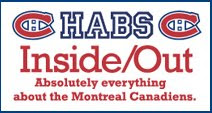





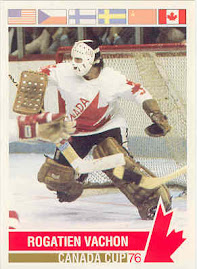
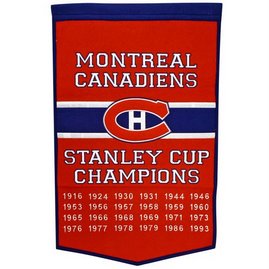







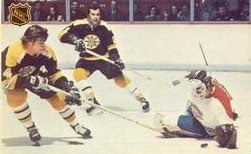



















































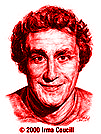



































































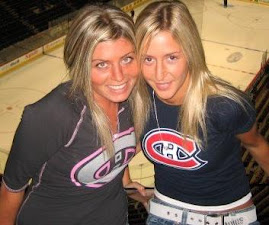
















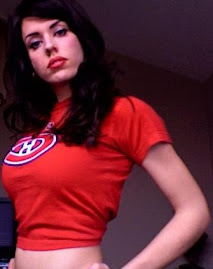

9 comments:
It was a long post.. but a great read. I love habs history.
Great blog Robert. I really enjoy it!
Thanks, man. I learned a ton writing it!
Rumour had it that The Rocket begged Montreal management to draft Mike Bossy. In fairness, Napier was a fabulous junior player. I consider Bossy to be one of the top 25 players of all time. I can only imagine what he would had accomplished if his back hadn't of given out. So it goes.
great info..much appreciated. The only correction I add is that Kevin Treacy WAS drafted in the NHL and the WHA in 1974, 17th Rd by NYR and 4th round by Edmonton. He played one year of minors with Flint and was then out of professional hockey.
Any other royals stories Robert, love to share your passion and stories, my all time favourite royals in no particular order are Dan Geoffrion, John Wensink, Dale Hawerchuk, Paul Ross and Dave Eazard, I remember many bench brawls from the early 70s onward, one in particular Montreal Juniors vs Royals at the forum, 1st palyoff game 1975, 3 bench brawls in one game, what a beauty, have you seen any like that concerning our beloved Royals,
Outstanding. Have long been fascinated by Gary MacGregor. Doing some recent baseball research in The Sporting News archives, I discovered that he was a diabetic. Not diagnosed until his last year w/ Cornwall or rookie year in the WHA. I read your great post a few mos ago & just dropped in to make sure it was still accessible. Thus, can't recall if you mentioned that Gary's younger bro Cam was a member of Cornwall's '80 cup champs. Or if you mentioned that GM died young, in the mid 90s(?). Aprx 40, if memory serves. More memories from you re: the 73-74 QMJHL would be greatly appreciated. God, how I wish game films of that season could be posted on youtube.
Best,
Patrick McCabe
Wow! This is fantastic Robert I remember the old Water Street arena and it's dressing rooms where one could scald themselves on the pipes. I remember the old analog clock what a hoot. I used to sneak into the Royals games during warmup and witnessed Larouche score 8 points one night. Please post youtube footage maybe Cogeco has some.Best Regards,
Sarnia Ontario
Great article! The only thing is Steve Shutt was not hurt in the 1979-1980 series. I think Larouche could have been a great two-way player for Montreal but didn't want to work on the defensive side of his game.
When Lucky Pierre Larouche put his mind to it he could dominate hockey games with his dynamic offensive play. Very underrated in terms of his NHL accomplishments.
Post a Comment